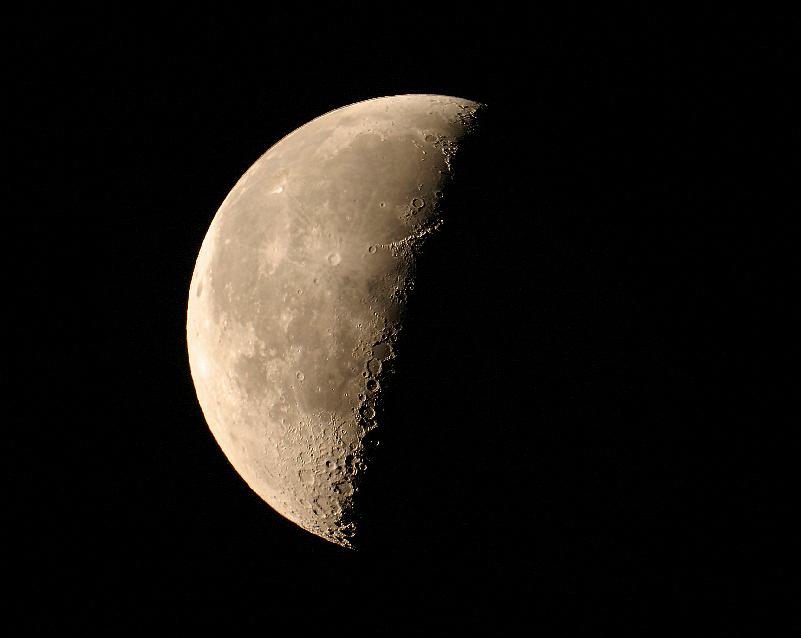 |
The Last Quarter Moon
 |
Copyright 2004 Hap Griffin
A half-illuminated moon taken at the end of an observing session. Normally, deep sky observing and photographic sessions end when the moon comes up and masks the dimmer objects with its reflected sunlight. The last quarter moon hanging in a clear August sky was too tempting to leave behind without capturing a photograph.
The line between daylight and darkness on the moon is called the "terminator". The shadows cast by the setting sun cause the geological features along the terminator to stand out. The large relatively smooth areas are called "seas" or "maria" from an ancient time when these areas were actually thought to be water from their smooth appearance. Actually, these areas have been found to be lava flows from an era when the moon was volcanically active. The large area near the top rimmed by the Lunar Appenine mountains is Mare Imbrium and to its left is Oceanus Procellarum. The large crator with light-colored "rays" extending from it is Copernicus. Just to the right of the distinct crator Archimedes, about a quarter of the way down the terminator from the top, is Mount Hadley in the Appenine chain. This mountain rises 14,000 feet above the lunar surface and is where the Apollo 15 astronauts landed and drove NASA's Lunar Rover for the first time.
Farther down the terminator is the triple crator system of Ptolemaeus, Alphonsus, and Arzachel, which has a distinct peak in its center, highlighted here by the sunlight reflecting off its top. Farther still down the terminator and standing out in the sunlight is the peaked crator Tycho. In different lighting conditions, many rays of ejected material can be seen emanating from Tycho and overlying the surrounding terrain. Craters with such rays, like Tycho and Copernicus, are relatively young since the material ejected from the meteor impacts that formed them lies relatively un-eroded. In fact, Tycho is the youngest large crator on the side of the moon facing us.
Date/Location:
August 7, 2004 Griffin/Hunter
Observatory Bethune, SC
Instrument: Meade f6.3 10" LX-200
Focal Ratio: Approx. f4 (utilizing focal reducer in GEG)
Guiding: None
Conditions: Visually clear
Weather: 58 F, calm
Camera: Canon 10D Digital SLR
Exposure: 1 x 1/30th second
Filters: None
Processing: Richardson-Lucy Adaptive iterative restoration for
sharpening in ImagesPlus.
Final finishing and JPEG conversion in Photoshop